The Imperial Palace is one of the most popular tourist attractions in Tōkyō, Japan.
However, due to limited information about visiting the Royal Palace, it may be difficult for those who come to visit for the first time.
“When is the time to visit the Tōkyō Imperial Palace?”
“What’s inside the Imperial Palace?”
“Is it possible to see the Emperor just by visiting the Imperial Palace?”
And there are certainly many more questions.
In this article, I will detail how to visit the Tōkyō Imperial Palace so that even your first visit can easily navigate and choose the right schedule.
If you are planning to visit the Tōkyō Imperial Palace, make sure to take note of this information.
- Introduction to Tōkyō Imperial Palace
- Outline map of Tōkyō Imperial Palace
- Tour the inside of the Tōkyō Imperial Palace
- Visit Kōkyo Gaien – the National park outside the Tōkyō Imperial Palace
- Visit Kōkyo Higashi Gyoen – East Garden of Tōkyō Imperial Palace
- Visit Kitanomaru Kōen – the park at north of Tokyo Imperial Palace
- Can see The Emperor on 2 special visits at the Tokyo Imperial Palace
Introduction to Tōkyō Imperial Palace
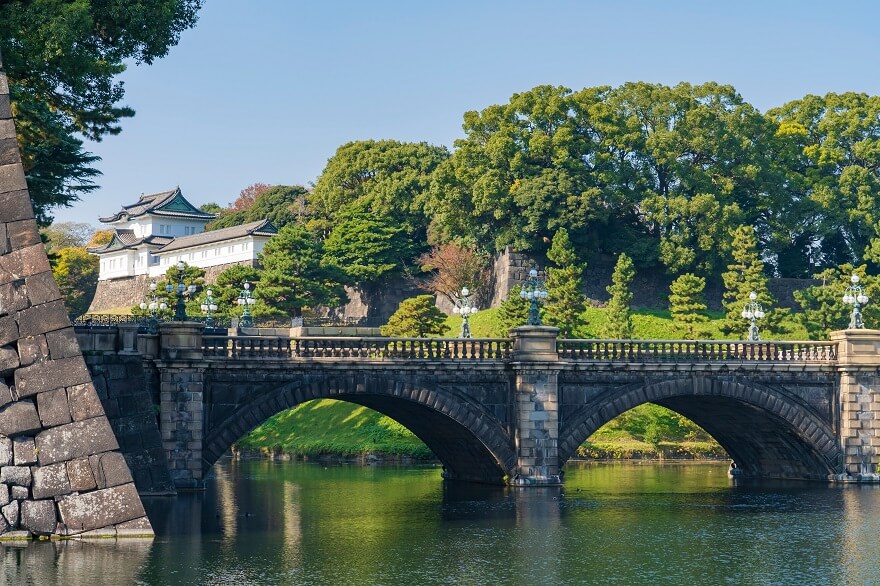
Tōkyō Imperial Palace in Japanese called Kōkyo (皇居), was the residence of successive Emperors from Emperor Meiji to the present Emperor.
The Imperial Palace is located in the heart of Tōkyō, just a 15-minute walk from Tōkyō Station.
Surrounded by moats and vast gardens, the Tōkyō Imperial Palace has a dignified and tranquil atmosphere almost isolated from the bustling outside world.
Tōkyō Imperial Palace was originally Edo Castle – the former castle of the Tokugawa Shogunate government*.
Therefore, visiting the inside of the Imperial Palace, you will be able to see some architectural remnants such as the foundation of Edo Castle, the gate, the watchtower…
(*) Note: The Tokugawa Shogunate was a powerful Samurai government that controlled the politics and economy of Japan from 1603 to 1867.
In 1867, Shogun Tokugawa Yoshinobu officially handed power to the Emperor, ending the Edo era and ushering in the Meiji era.
Outline map of Tōkyō Imperial Palace
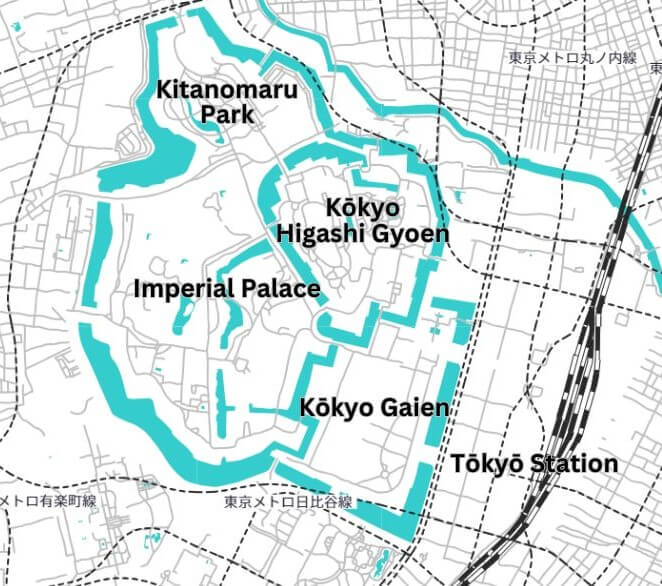
Tōkyō Imperial Palace has 4 main areas:
- The grounds inside the Imperial Palace
- National Park outside the Tōkyō Imperial Palace: Kōkyo Gaien
- Tōkyō Imperial Palace East Garden: Kōkyo Higashi Gyoen
- Tōkyō Imperial Palace North Park: Kitanomaru Kōen
Currently, all four areas above are open to visitors.
In particular, if you are lucky enough to visit the Imperial Palace on January 2 and February 23, you can also see the Emperor and his family waving from afar.
In the next content, I will introduce in detail how to visit each area of the Tōkyō Imperial Palace.
Make sure to refer to it to make your visit more convenient and enjoyable.
Tour the inside of the Tōkyō Imperial Palace
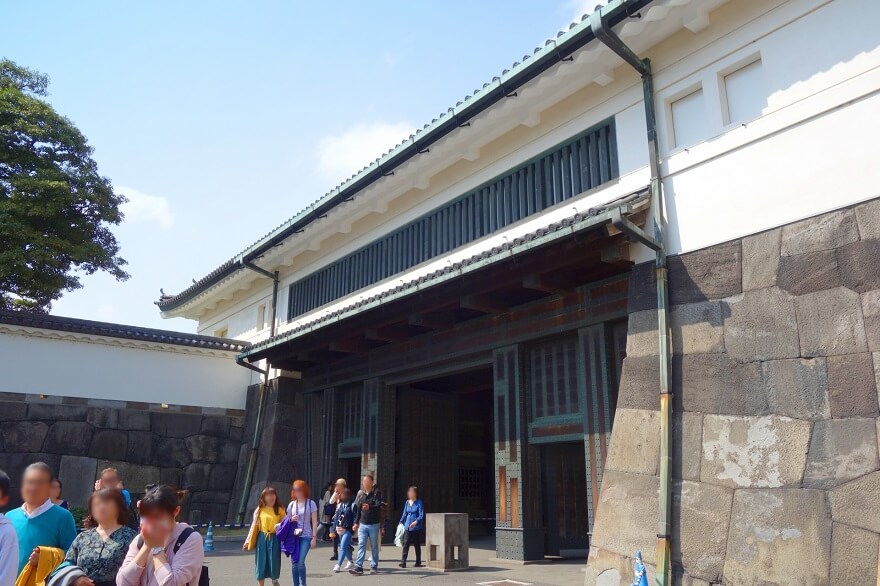
Admission conditions:
- Pre-registration is mandatory (see registration method below)
- Need to show proof such as driver’s license, My Number card, passport, residence card or insurance card… (original)
Ticket price: free
Visiting time:
There are 2 tours per day, morning at 10:00, afternoon at 13:30.
Each tour lasts about 75 minutes.
Day off:
- Sunday
- Monday
- Public Holidays (if it falls on a Saturday, it will still be open)
- Afternoon from July 21 to August 31
- December 28 ~ January 4 next year
- Days with events or maintenance problems
How to register:
There are 3 ways to register, which is online registration, pre-registration by phone or directly to the Imperial Palace gate to get tickets on the day you want to visit.
1. Online registration:
The registration portal will open from 5:00 am on the 1st of the month before the date you want to visit.
For example, if you want to visit in June 2023, you can apply from May 1, 2023.
Registration link:
https://sankan.kunaicho.go.jp/register/month/1001?locale=ja
2. Pre-registration by phone:
Sometimes even though online registration is full, there is still room for phone registration, so you can test call to confirm in person.
Phone number: 03-5223-8071
(Available time: 8:45 ~ 12:00 or 13:00 ~ 17:00)
3. Go directly to the Imperial Palace gate to get admission tickets:
Admission tickets are issued in front of Kikyō-mon Gate (桔梗門) at 9am (tickets for the tour start at 10am) and 12:30pm (tickets for the tour start at 13:30).
Tickets are distributed in order of queue at that time and only 1 ticket per person is allowed.
Number of registrations:
- Register online or by phone: 200 people
- Come get tickets directly: 300 people
Route:
The journey takes about 75 minutes with the sightseeing route about 2.2km.
A guide (Japanese, English, Chinese) will accompany you throughout the journey.
Meet up at the Kikyō-mon Gate Sōmeikan (rest area) Watchtower Fujimi Yagura Imperial Household Agency East Garden Nijūbashi Bridge Back to East Garden Yamashita-dōri Street Imperial Household Agency End of tour at the Kikyō-mon Gate
How to get to Kikyō-mon Gate:
- 10 minutes walk from Exit No.6 of Nijubashimae Station or Exit D2 of Otemachi Station
- 15 minutes walk from Tokyo Station’s Marunouchi Central Exit
Visit Kōkyo Gaien – the National park outside the Tōkyō Imperial Palace
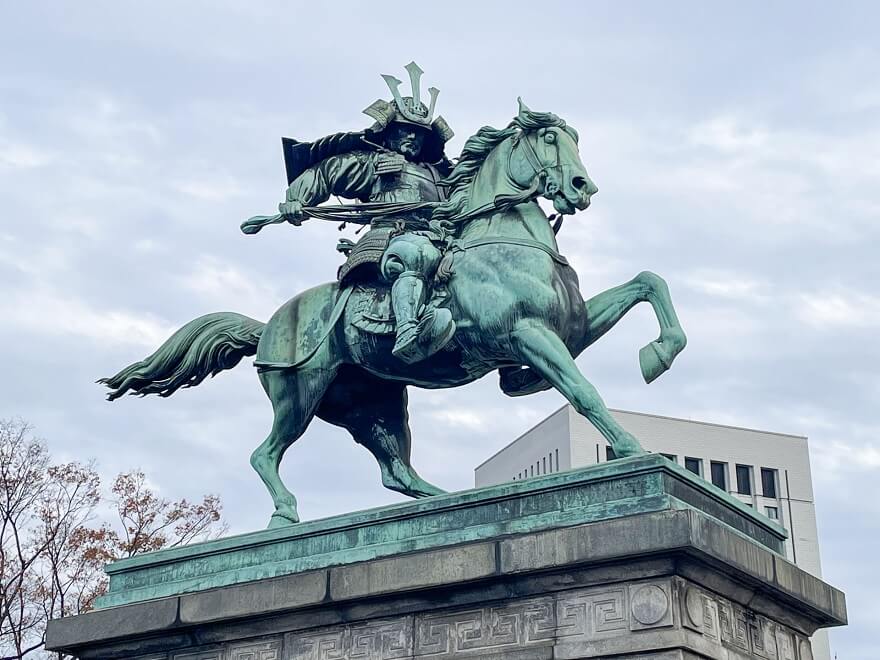
Japanese name: 皇居外苑 (Kōkyo Gaien)
Ticket price: free
Opening hours: 24/24
However, there may be restrictions on access when there are national events.
Some outstanding attractions:
- Nijūbashi Bridge (二重橋): the iron bridge located at the main gate of the Imperial Palace.
- Sakuradamon Gate (桜田門): the gate has been recognized as an Important Cultural Property of the nation.
- Bronze Statue of Kusunoki Masashige (楠木正成像): a 6.7 ton statue, 8 meters high (including the pedestal) donated by Sumitomo Corporation.
- Black pine forest (クロマツ): about 2,000 black pine trees are scattered on the large lawn, creating an airy and majestic scene.
- Wadakura Fountain Park (和田倉噴水公園): was built in 1961 to celebrate the marriage of the then Emperor and redeveloped in 1995 to celebrate the marriage of the Crown Prince.
How to go:
- 2 minutes walk from Exit No.2 or Exit B6 of Nijubashimae Station (Tokyo Metro Chiyoda Line)
- 8 minutes walk from Exit No.3 of Sakuradamon Station (Tokyo Metro Yurakucho Line)
- 2 minutes walk from Exit No.2 or Exit B6 of Hibiya Station (Tokyo Metro Hibiya Line)
- 10 minutes walk from JR Tokyo or JR Yurakucho
Visit Kōkyo Higashi Gyoen – East Garden of Tōkyō Imperial Palace
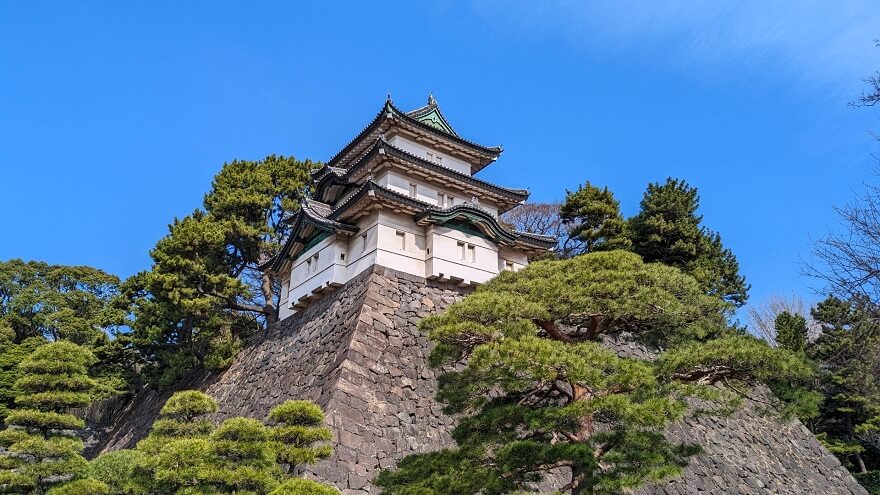
Japanese name: 皇居東御苑 (Kōkyo Higashi Gyoen)
Admission conditions: receive the entrance card when entering and return it when leaving the garden.
Ticket price: free
Opening hours:
- March 1 ~ April 14: open from 9am to 5pm (last entry is until 4:30pm)
- April 15 ~ end of August: open from 9am to 6pm (last entry is until 5:30pm)
- September 1 ~ end of September: open from 9am to 5pm (last entry is until 4:30pm)
- October 1 ~ end of October: open from 9am to 4:30pm (last entry is until 4pm)
- January 1 ~ end of February: open from 9am to 4pm (last entry is until 3:30pm)
Day off:
- Monday and Friday
However, if Monday or Friday coincides with a national holiday (except for the Emperor’s birthday), it is still open.
If Monday is open, it will be closed on Tuesday. - From December 28 to January 3 next year
- Dates with events or other force majeure reasons
Some outstanding attractions:
- Ōte-mon Gate (大手門): the main gate of the old Edo Castle, destroyed in 1945 and rebuilt in 1967.
- Fujimi Yagura Watchtower (富士見櫓): 16m high tower, is the only 3-storey tower remaining in the Imperial Palace.
- Tenjudai ruins (天守台): the foundation of the old Edo Castle, 46m wide to the North and South, 42m to the East and West, 10m high.
- Kitahanebashi-mon Gate (北桔橋門): the gate that guarded the old castle. At that time, the bridge in front of the gate was designed so that it could be pulled up so that the enemy could not penetrate.
- Tōkagakudō Music Hall (桃華楽堂): built in 1966 to celebrate Empress Kōjun’s 60th birthday.
- Hirakawa-mon Gate (平川門): is the entrance of the women who worked in the old palace.
How to go:
There are three gates to the Kōkyo Higashi Gyoen garden, namely the Ōte-mon Gate (大手門), the Hirakawa-mon Gate (平川門) and the Kitahanebashi-mon Gate (北桔橋門).
- How to get to Ōte-mon Gate
- 5 minutes walk from Exit C13a of Ōtemachi Station
- 10 minutes walk from Exit No.6 of Nijubashimae Station
- 15 minutes walk from Marunouchi North Exit of JR Tokyo Station
- How to get to Hirakawa-mon Gate
- 5 minutes walk from Exit 1a of Takebashi Station
- How to get to Kitahanebashi-mon Gate
- 5 minutes walk from Exit 1a of Takebashi Station
Visit Kitanomaru Kōen – the park at north of Tokyo Imperial Palace
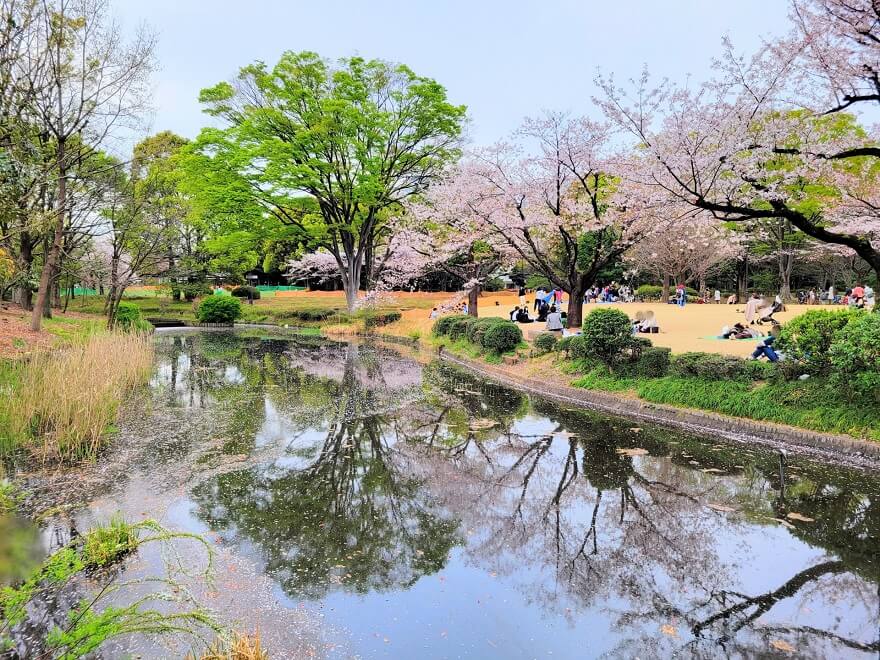
Japanese name: 北の丸公園 (Kitanomaru Kōen)
Ticket price: free
Opening hours: 24/24
However, there may be restrictions on access when there are national events.
Some outstanding attractions:
- Tayasu-mon Gate (田安門): built in 1636, is the oldest of the existing architectural ruins of the former Edo Castle.
- Shimizu-mon Gate (清水門): rebuilt in 1658.
- Shōwakan National Memorial Museum (昭和館): a place to keep historical documents about the difficult life of Japanese people during and after the war (circa 1935 to 1955).
- National Museum of Modern Art (東京国立近代美術館): is the first national art museum in Japan, which houses documents and artworks from the 19th century to the present.
- National Archives of Japan (国立公文書館): a place to preserve and store historical documents transferred from national administrative agencies.
How to go:
- 5 minutes walk from Kudanshita Station
- 5 minutes walk from Takebashi Station
Can see The Emperor on 2 special visits at the Tokyo Imperial Palace
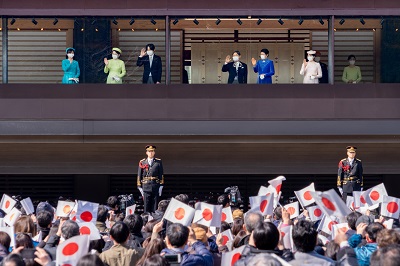
(https://www.kunaicho.go.jp/event/sanga/sanga02.html)
Every year, the Tōkyō Imperial Palace organizes 2 special visits on New Year’s Day (January 2) and the Emperor’s Birthday (February 23).
If you are lucky enough to participate, you will be able to see the Emperor and his family waving from the balcony in the distance.
Of course, not everyone can participate in this special tour, but you need to register (free) and win the lottery.
How to register will be announced on the official website of the Royal Household Agency about 2~3 months before the event.
If you are interested, please check the website regularly.
- Details of the New Year’s Day Tour to Tokyo Imperial Palace (January 2):
https://www.kunaicho.go.jp/event/sanga/sanga01.html - Details of the visit to Tokyo Imperial Palace on the Emperor’s birthday (February 23):
https://www.kunaicho.go.jp/event/sanga/sanga02.html
Conclusion
In the midst of the bustling and bustling capital Tokyo, the Imperial Palace is like a peaceful and beautiful oasis that gives you the feeling of being lost in another world.
Visiting the inside of the Tōkyō Imperial Palace is of course great, but if you can’t register, you can also stroll through Kōkyo Gaien National Park, Kōkyo Higashi Gyoen East Garden or Kitanomaru Kōen North Park.
Besides the beautiful scenery, each area of the Tōkyō Imperial Palace has historical sites that are sure to give you a deeper insight into Japanese history.
If you have the opportunity to visit Tokyo, you should definitely take the time to visit the Imperial Palace!

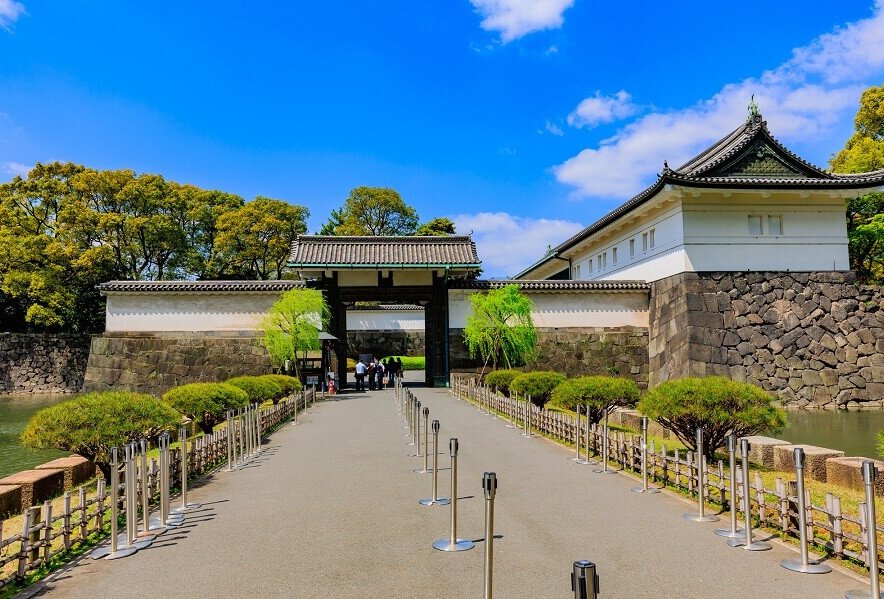
Comment